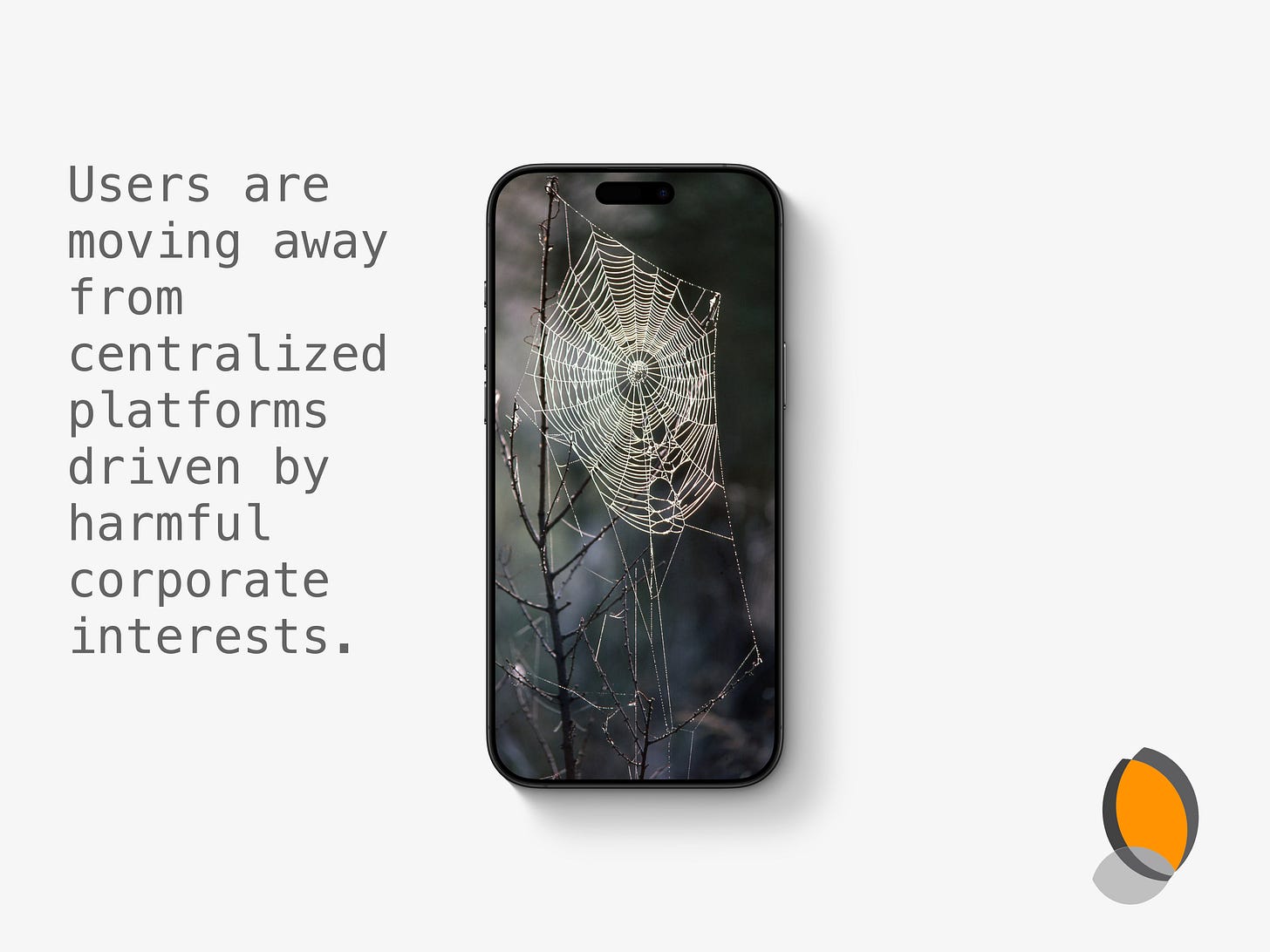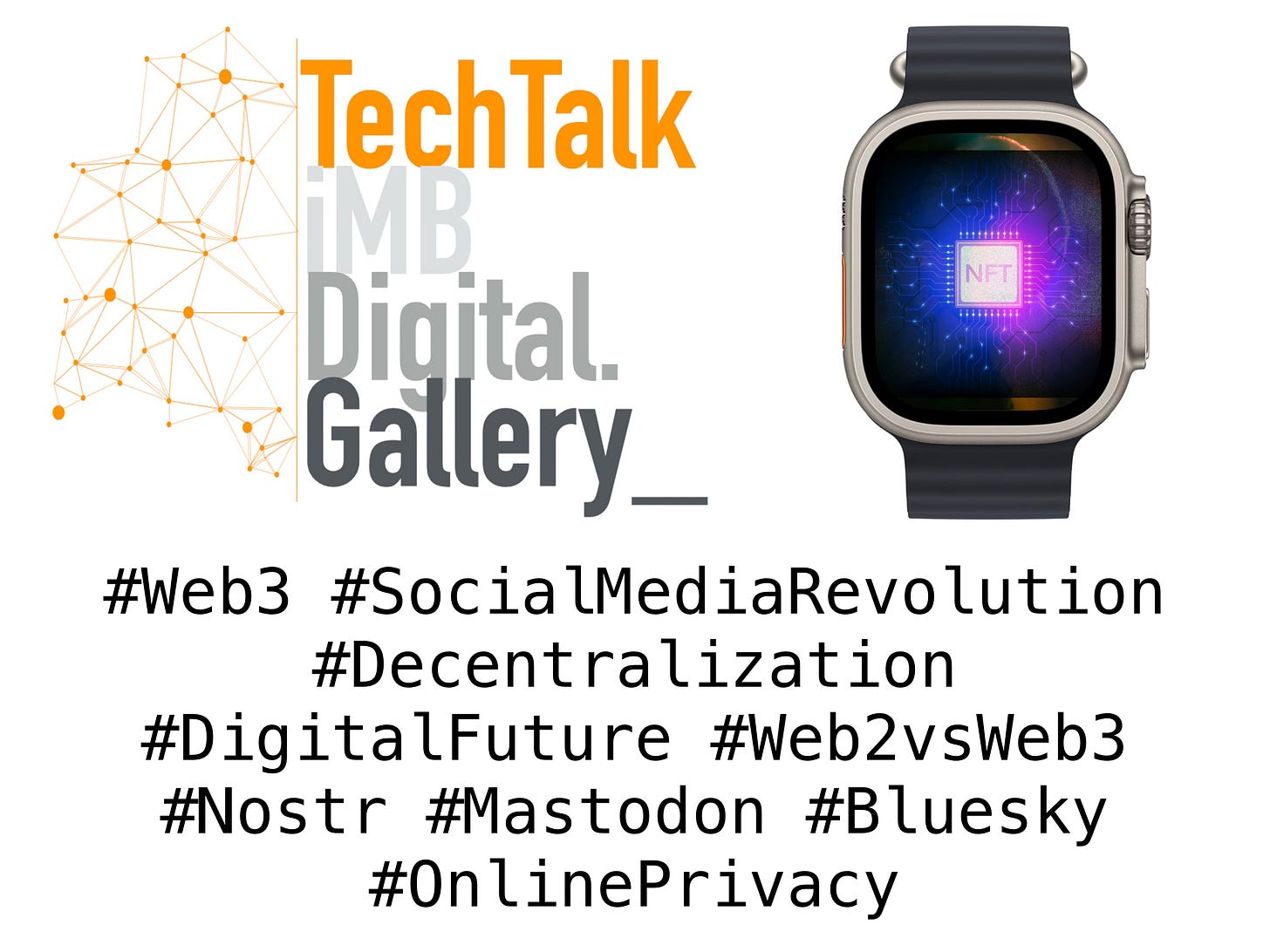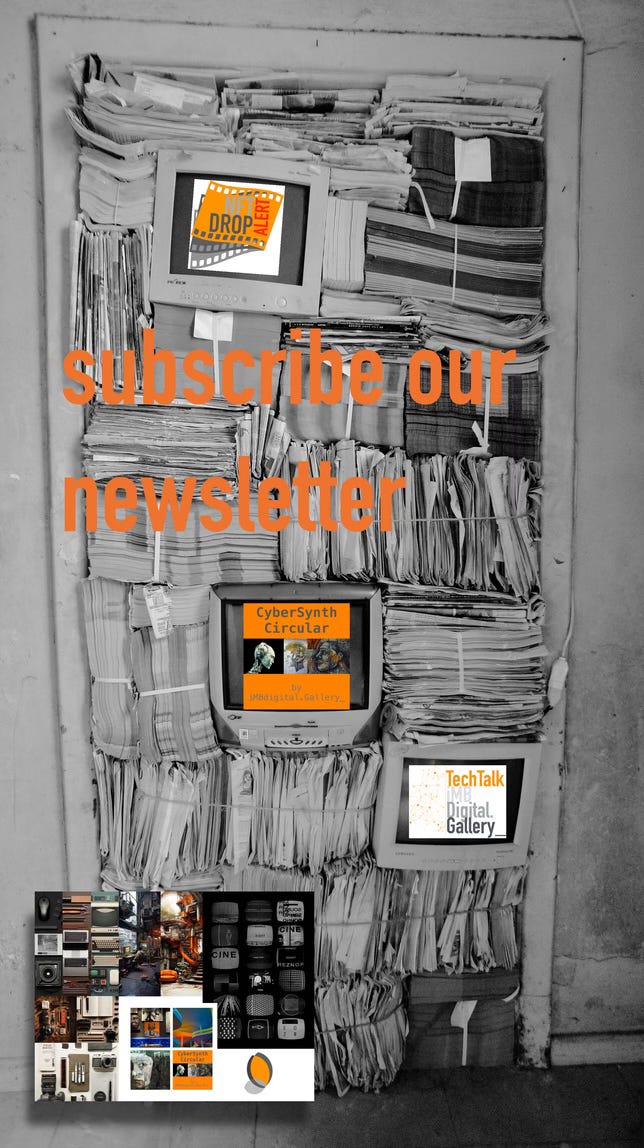CyberSynth Circular | May 2025 Edition
2025 isn’t the end. It’s the beginning of a smarter, user-first digital era. Discover why Facebook, LinkedIn & X are losing ground, and how Web3 is reshaping the game.
The End of Social Media as We Know It: Why 2025 Marks the Beginning of a Decentralized Digital Future
The End of Social Media as We Know It - Why 2025 Will Change Everything
2025 is marking a seismic shift in how we use and think about social media. The once-dominant Web2 platforms like Facebook, LinkedIn, and Twitter (now X) are losing relevance, plagued by intrusive ads, biased algorithms, and increasing user dissatisfaction. But this isn’t the apocalypse—it’s an evolution.
Users are moving away from centralized platforms driven by corporate interests and embracing the future of social media: decentralized, user-controlled Web3 platforms. Built on blockchain and governed by communities, platforms like Mastodon and Bluesky are gaining traction by offering transparency, enhanced data privacy, and more authentic interactions.
This new era of social media prioritizes user ownership of data, transparent content moderation, and token-based economies that reward engagement. It’s a stark contrast to the ad-saturated, algorithm-dictated experiences of Web2.
As Web3 social media becomes more accessible and user-friendly, traditional platforms face a dramatic decline. The shift isn’t just about new technology—it’s about returning power to the people. Whether you’re a content creator, business, or everyday user, the change is here, and it’s time to adapt.
Ready to understand what’s next for the internet? Learn how Web3 platforms are redefining the digital experience and why now is the time to explore decentralized social media alternatives.
Tokenizing Argentina’s Mining and Lithium Resources: A New Frontier with Opportunities and Challenges
Intro
Argentina🇦🇷, a key player in the global lithium market, is embracing blockchain innovation to revolutionize its mining sector. As part of the "Lithium Triangle" alongside Chile and Bolivia, Argentina holds over 20% of the world’s lithium reserves, critical for batteries and renewable energy. Emerging projects aim to tokenize these resources, converting ownership or investment rights into digital tokens. This article explores the potential benefits and risks of this transformative approach.
The Rise of Tokenization in Argentina
Several initiatives, though not all publicly detailed, are underway in provinces like Salta and Jujuy, where lithium reserves are abundant. Startups and government entities are exploring blockchain to democratize access to mining investments. For instance, discussions around lithium-backed digital tokens have surfaced, aiming to leverage blockchain’s transparency to attract global investors.
Pros of Tokenizing Mining and Lithium Resources
Democratized Investment Opportunities
Blockchain enables fractional ownership, allowing small-scale investors to participate in capital-intensive mining projects. This could mobilize both local and international capital, vital for Argentina’s inflation-strapped economy
Enhanced Transparency and Efficiency
Blockchain’s immutable ledger reduces fraud risks and streamlines transactions. Smart contracts could automate royalty payments and compliance, fostering trust among stakeholders.
Accelerated Project Funding
Tokenization provides upfront capital for lithium projects, which require significant initial investment. This could fast-track Argentina’s position in the global EV and renewable energy supply chain.
Global Market Access
Digital tokens can attract tech-savvy investors worldwide, bypassing traditional financial barriers and positioning Argentina as a blockchain innovator.
Cons and Challenges
Regulatory Uncertainty
Cryptocurrency regulations in Argentina remain fluid. Legal frameworks for asset-backed tokens are underdeveloped, posing risks for investors and developers.
Environmental Trade-Offs
Lithium mining consumes vast water resources, impacting arid regions. Additionally, energy-intensive blockchain networks (if using proof-of-work) could contradict sustainability goals, though proof-of-stake models may mitigate this.
Market Volatility
Crypto markets’ unpredictability could deter risk-averse investors. Token value fluctuations might complicate long-term project financing.
Technological and Social Barriers
Limited blockchain literacy in Argentina could hinder participation. Security vulnerabilities, such as hacking, also pose risks if platforms are poorly designed.
Resource Sovereignty Concerns
While tokenization invites foreign investment, it risks ceding control over strategic resources to international actors, potentially sparking local opposition.
Final Thoughts: Balancing Innovation with Caution
Argentina’s tokenization experiments could redefine mining investments, offering economic growth and technological leadership. However, success hinges on robust regulations, environmental safeguards, and inclusive policies to ensure benefits extend to local communities. By addressing these challenges, Argentina can harness blockchain’s potential while safeguarding its natural and economic interests. As the world watches, this bold experiment may set a precedent for resource-rich nations navigating the digital frontier.
Tokenizing lithium and mining resources presents a tantalizing opportunity for Argentina, blending natural wealth with cutting-edge tech. Yet, the path forward requires careful navigation of risks. With thoughtful governance, Argentina could emerge as a model for sustainable, inclusive resource management in the blockchain age.
👉🏼 read also:
Turning Waste Into Wealth—The Bold Case for Bitcoin Mining with Flared Gas
What if we told you that one of the oil industry's most wasteful and polluting practices could become a surprising climate ally—and a digital goldmine?
Welcome to the world of Bitcoin mining powered by flared gas, where tech meets energy in a bid to solve one of the fossil fuel sector’s dirtiest secrets.
🔥 The Flaring Problem: When Energy Goes Up in Smoke
Gas flaring happens when oil companies extract crude oil and burn off the associated natural gas because there’s no infrastructure to store, process, or transport it. In worse cases, the gas is vented directly into the atmosphere.
Why is this a big deal?
Climate Change: Flaring emits CO₂, but venting releases methane—80x more potent than CO₂ over 20 years.
Pollution: Black carbon and other toxins harm health and the climate. The World Bank links air pollution from flaring to over 7 million premature deaths annually.
Waste: In 2020 alone, the world flared 5.3 trillion cubic feet of natural gas—enough to power 25% of U.S. households for a year.
And why does it keep happening? Because pipelines and processing plants are expensive, especially in remote oilfields. If gas prices are low, flaring is simply cheaper.
🌍 Where Is Gas Flaring the Worst?
In 2020, just seven countries were responsible for more than 50% of global gas flaring:
Russia🇷🇺 ~23 billion cubic meters (BCM)
Iraq🇮🇶 ~18 BCM
Iran🇮🇷 ~13 BCM
United States🇺🇸 ~12 BCM
Algeria🇩🇿 ~10 BCM
Venezuela🇻🇪 ~9 BCM
Nigeria🇳🇬 ~7 BCM
To put it in perspective: the 150 billion cubic meters flared globally in 2020 could meet nearly 7% of the world's electricity demand.
💡 A Radical Solution: Bitcoin Mining at the Wellhead
Bitcoin mining needs a lot of electricity. Think 24/7 ovens on full blast. So why not use the flared gas to generate power and mine crypto?
Here’s the process:
Divert flared gas to on-site generators.
Generate electricity right there in the field.
Power portable mining units (usually in shipping containers).
Earn Bitcoin. Reduce emissions. Rinse and repeat.
This is called Digital Flare Mitigation (DFM). And it’s gaining momentum.
🧑🏭 Who’s Leading the Charge?
Several trailblazing companies are already turning waste gas into Bitcoin:
NYDIG (formerly Crusoe Energy): Partners with ExxonMobil and Equinor. Operates hundreds of mobile mining centers across the U.S. and Argentina.
EZ Blockchain: Runs mining farms in Utah, New Mexico, and Canada🍁.
Giga Energy Solutions: Texas-based startup that turned wasted gas into $4 million in revenue.
Upstream Data: A Canadian🇨🇦 firm that helps oil producers DIY their own mining sites.
Oil majors like Exxon, Equinor, and ConocoPhillips are also exploring or piloting similar efforts.
👍 Why This Could Be a Win-Win
Fewer Emissions: Controlled combustion in generators is more efficient than open flaring.
Revenue Stream: What used to be a financial and environmental liability becomes a profit center.
Energy Efficiency: It puts wasted energy to good use—better than relying on coal-heavy grids.
Regulatory Compliance: Helps oil companies meet methane emission rules.
Jobs: Supports local employment in tech and energy infrastructure.
👎 But Not Everyone's Convinced
Critics warn that:
It prolongs fossil fuel use and distracts from the renewable energy transition.
It still pollutes—just more efficiently.
Bitcoin’s volatility and energy needs could make it a risky bet.
The water and land footprint of Bitcoin mining is massive.
It’s not always scalable—impure or low-volume gas isn’t worth mining.
As Greenpeace puts it: “A false solution.”
🧭 The Verdict: Disruption or Distraction?
Bitcoin mining with flared gas isn’t a silver bullet—but it’s no smoke-and-mirrors either.
It offers a pragmatic bridge between the energy world we have and the cleaner one we’re building. In regions with limited infrastructure, it’s a rare case where crypto can be a climate tool—if used wisely.
But for it to truly be part of a sustainable future, it must come alongside serious efforts to phase out fossil fuels and invest in renewables.
💬 What’s Your Take?
Is this a smart use of stranded energy—or a clever way to delay the energy transition?
We’d love to hear your thoughts.
P.S. Zero routine flaring by 2030 is the World Bank’s goal. Will Bitcoin mining help us get there—or hold us back?
🏗️ Real Estate Tokenization: A $4 Trillion Market by 2035
Blockchain is not just for crypto anymore — it's reshaping the bricks and mortar of global real estate.
In a bold new report released on April 25, consulting powerhouse Deloitte forecasts that real estate tokenization could explode into a $4 trillion market by 2035, fundamentally reshaping how we buy, sell, finance, and invest in property.
At the core of this transformation is the concept of tokenization — the process of representing real-world assets like buildings and land as digital tokens on blockchain networks. According to Deloitte, this will soon become “central” to the real estate industry, positioning blockchain not as a disruptive outsider but as a new pillar of traditional finance.
Currently, the global market for tokenized real estate sits at under $300 billion, but Deloitte projects a meteoric rise: the first $1 trillion milestone is expected by 2032, with an average annual growth rate of 27% over the next decade.
🔑 Why Tokenization Changes the Game
Deloitte’s vision is clear: efficiency, accessibility, and automation. Tokenization brings sweeping improvements to legacy systems by streamlining operations, lowering transaction costs, and enabling faster, more transparent real estate deals. It also democratizes access to the market by reducing the barriers to entry for both retail and institutional investors.
The benefits extend to:
Fractional ownership and global investor participation
Automated processes for fund launches and investment management
Enhanced liquidity for traditionally illiquid assets
📊 A Three-Stage Transformation
Deloitte outlines a phased roadmap for adoption:
Tokenization of real estate funds – poised to hit $1 trillion by 2035
Tokenization of loans/credit – potentially worth $2.9 trillion by 2025
Tokenization of development-stage projects – with the market for tokenized assets reaching $500 billion
🚧 But Not Without Challenges
Despite the glowing projections, Deloitte underscores significant hurdles. Regulatory clarity, digital asset custody, and cybersecurity will be critical to ensuring safe and scalable adoption. These are the deciding factors that could either catalyze a new era of digital real estate — or stall its momentum.
🌍 The Takeaway
Real estate tokenization is no longer a fringe concept — it's gearing up to become a cornerstone of the global property market. For investors, developers, and regulators alike, now is the time to engage with this evolving frontier.
🚀 Maldives Makes Waves: $8.8 Billion Blockchain Financial Hub to Redefine the Nation’s Economic Future
In a bold move that signals a seismic shift in its economic trajectory, the Maldives has inked a joint venture agreement with Dubai-based MBS Global Investments to develop an $8.8 billion blockchain and digital asset financial center in the capital, Malé. This groundbreaking project aims to radically transform the nation's economic dependence on tourism and fishing—and instead reposition the Maldives as a future-ready financial innovation hub.
The ambitious partnership is backed by significant regional muscle. MBS Global Investments, the family office of Qatari billionaire Sheikh Nayef bin Eid Al Thani, has already secured initial funding commitments totaling $4–5 billion. That level of capital injection underscores the serious intent behind the venture—and sends a clear signal to global investors that the Maldives is ready to play in the league of next-gen finance.
🌐 From Paradise to Protocols: Reinventing the Economic DNA
For decades, the Maldivian economy has leaned heavily on the sun-soaked appeal of its islands and the abundance of marine resources. While this model has generated consistent revenue, it remains vulnerable to external shocks—like global recessions, pandemics, and climate change.
Enter blockchain and digital assets. With this move, the Maldives is not just seeking diversification—it's orchestrating an economic metamorphosis. The envisioned financial center in Malé aims to attract international fintech companies, serve as a hub for decentralized finance (DeFi) operations, and create thousands of high-skilled jobs in tech and finance.
🌍 Middle Eastern Capital Meets Island Ambition
The collaboration with MBS Global Investments reflects a growing trend: Middle Eastern capital flowing into high-tech, future-oriented infrastructure in emerging markets. It also highlights how family offices like that of Sheikh Nayef bin Eid Al Thani are evolving from passive investors into active builders of economic ecosystems.
This is more than a real estate or tech play—it's a geopolitical bet on digital sovereignty, financial decentralization, and the Maldives’ strategic positioning in the Indian Ocean.
⚡ Why This Matters
Digital Asset Regulation & Innovation: The project could serve as a sandbox for blockchain regulation in the Indian Ocean region.
Economic Resilience: A diversified economy with a strong digital backbone is more resilient to tourism shocks and climate-related risks.
Regional Competition: The Maldives may soon rival other crypto hubs like Dubai, Singapore, and Zug in Switzerland.
🚀 Looking Ahead
If successful, this project could mark the Maldives’ entry into the exclusive club of nations using web3 infrastructure to leapfrog economic development. It's a strategic pivot that embraces not just digital transformation—but economic reinvention.
One thing is clear: The Maldives is not just riding the blockchain wave—it’s building its own.


















